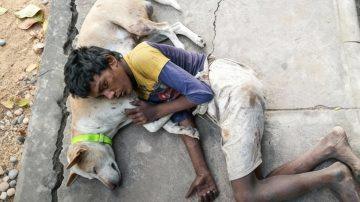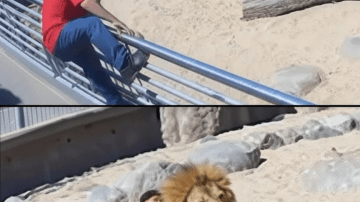The image of a small, innocent poodle nestled amidst a pile of discarded trash in a bin is not just a heartbreaking snapshot; it’s a stark, undeniable symbol of a much larger, more troubling crisis quietly unfolding across our communities. This scene, captured in what appears to be a moment of desperate abandonment, forces us to confront an uncomfortable truth: countless animals, once cherished companions, are being cast aside like refuse, left to navigate a world that suddenly deems them disposable. This isn’t merely an isolated incident; it’s a window into the increasing numbers of pets surrendered to shelters, found stray, or, in the most tragic cases, deliberately abandoned in the most inhumane ways imaginable. The plight of this poodle serves as a powerful, silent plea, urging us to look beyond the surface and address the systemic issues contributing to this heartbreaking reality.

The reasons behind pet abandonment are complex and multifaceted. Economic hardship often plays a significant role, as families struggle to afford food, veterinary care, and other necessities for their furry friends. Lifestyle changes, such as moving to a new home that doesn’t allow pets or the arrival of a new baby, can also lead owners to make difficult decisions.

Beyond these practical considerations, a lack of education about responsible pet ownership contributes significantly to the problem. Many people acquire pets without fully understanding the long-term commitment and resources required. This often results in animals being given up when they become too much to handle, exhibit behavioral issues, or simply grow out of their “cute” puppy or kitten phase.

While shelters and rescue organizations work tirelessly to provide care for abandoned animals, they are often overwhelmed by the sheer volume. Many operate at or beyond capacity, facing constant challenges with funding, resources, and finding enough loving homes. The emotional toll on staff and volunteers who witness such suffering is also immense.

The solution to this crisis requires a multi-pronged approach. Stricter regulations on breeding and selling pets, coupled with widespread access to affordable spay/neuter services, can help control pet overpopulation. Community programs offering financial aid for pet owners in need can prevent difficult surrenders, while educational campaigns can foster greater understanding of responsible pet ownership.

Ultimately, the image of this poodle in the trash bin is a call to action for all of us. It’s a reminder that pets are not commodities; they are living, feeling beings who deserve love, care, and a permanent home. By working together, we can turn the tide on pet abandonment and ensure that no animal ever again experiences the despair of being discarded.







